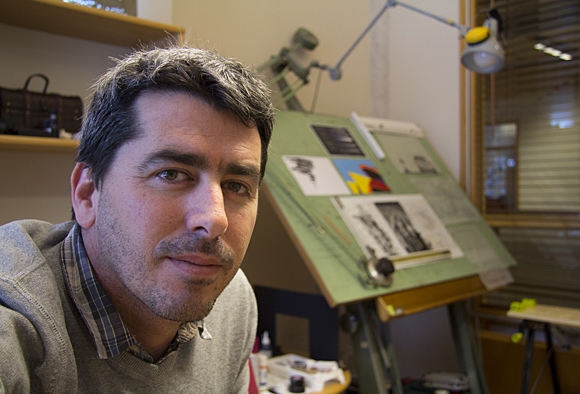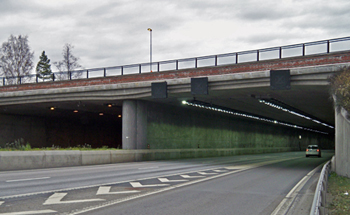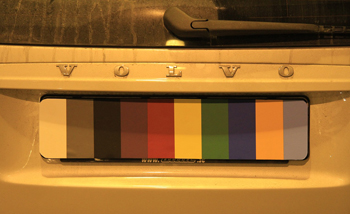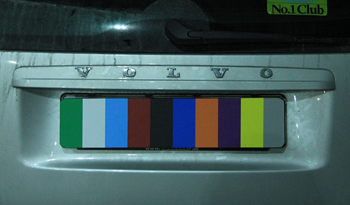Tunnel vision: let there be light
With LED, less is more
Environment
For transportation authorities looking to reduce operation costs, there’s a light at the end of the tunnel. Or, in the case of Sweden, the light is inside the tunnel.

Is there no longer any need for bright light in Sweden’s road tunnels? Probably not. A KTH researcher has tested modern LED (light-emitting diode) lighting in a road tunnel north of Stockholm, and concluded that the quality of the light is far superior to the old lighting it replaced, that visibility is better than that afforded by existing technology, and that LED lighting takes less power to run.
“Both colour fidelity and visibility are better with LED lighting compared with same-strength high-pressure sodium (HPS) lighting – the type most commonly used in tunnels today,” says Eran Aronson, the researcher at the KTH lighting lab who carried out the work.
The tests show that LED lighting with a luminous intensity of 3.2cd/sq m (3.2 candela per square meter) and 4.2 cd/sq m provides better visibility than HPS lighting offering 6.7cd/sq m. Meanwhile, 3.2cd/sq m LED lighting creates visibility of an average of one extra meter compared with 6.7cd/sq m HPS lighting. This makes current tunnel-lighting requirements of 5cd/sq m seem out of date.
“In other words, the brightness of the lighting can be halved without compromising road safety,” Aronson says.

He says the intensity of the lighting does not increase in line with power consumption in terms of wattage; going from 10cd/sq m to 5cd/sq m does not mean a 50 percent reduction in energy use. But decreased energy consumption still goes hand in hand with reduced luminous intensity.
Henrik Gidlund, a specialist at the Swedish Transport Administration (Trafikverket), has been involved in the research project. He says that for the government agency to light the country’s road tunnels, total annual power consumption amounts to 6,300MWh. When the Stockholm Bypass project is complete, this figure will rise dramatically to 15,800MWh.
“With new technology and less stringent requirements, we can decrease energy consumption in the country’s tunnels by 6,600MWh per year,” Gidlund says. “This is equivalent to annual cost savings of SEK 6.6 million (EUR 795,000). We may well question the current requirements of 5cd/sq m for the inner zone of a tunnel, and should really be able to decrease the brightness of lighting to the levels that apply outside the tunnel at night: in other words, 1.5-2cd/sq m.”

He and Aronson agree that LED lighting is the technology with the greatest potential today, but that in the future, there may also be other technologies – for example, plasma or OLED (organic light-emitting diode) lighting – that become talking points in relation to tunnel lighting technology.
Regarding color recognition, Aronson's tests show that colors at 6.7 cd/sq m HPS were recognized only to a level of 79 percent, while colors at 4.2 cd/sq m LED were recognized to a high of 90 percent.
“If we don’t care about colour rendering in tunnels, we can use LED lighting with a level of brightness below 3.2/sq m, and still maintain an acceptable level of safety, as compared with HPS lighting,” Aronson says.

According to Christer Berg, project manager and representative for this research being carried out by the Swedish Transport Administration, the results of this work are the basis for the lighting choice opted for in the 18km-long tunnel which will form most of the Stockholm Bypass. The lighting in this, which upon completion will be one of Europe’s longest road tunnels, is important of course, and LED lighting, for example, offers the possibility of light with a wider colour spectrum. This in turn means that surveillance camera systems work better, and hence safety is improved. Whether LED lighting or some other technology is picked remains uncertain, since other parameters such as buying costs come into play, and besides, there are still few years to go before the time is ripe to light up the tunnel.
The research was commissioned by the Swedish Transport Administration. The work has been carried out in the Häggvik tunnel in Sollentuna, north of Stockholm, where the LED lighting is still in use.